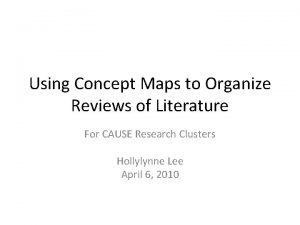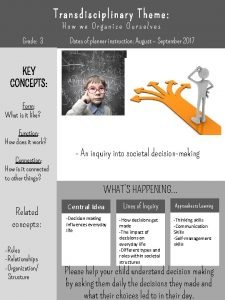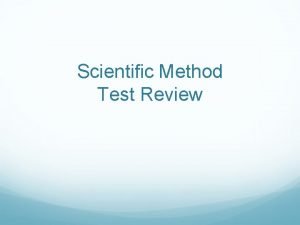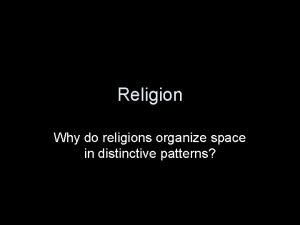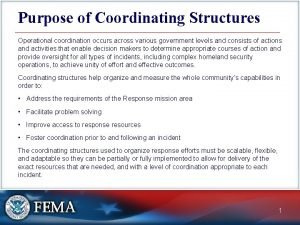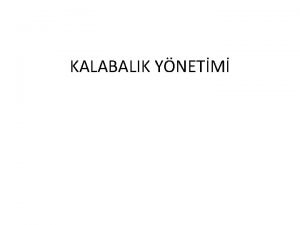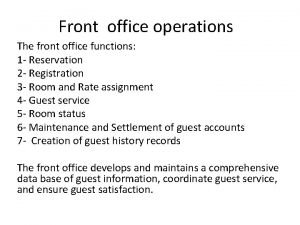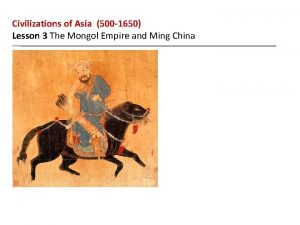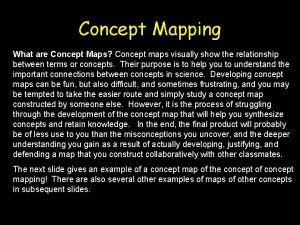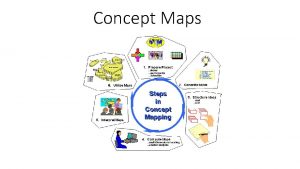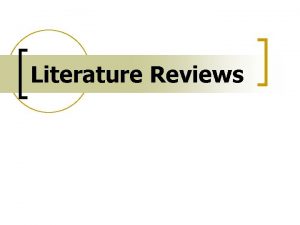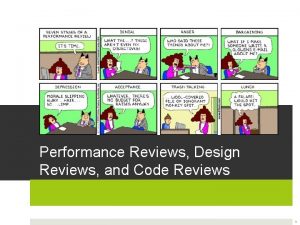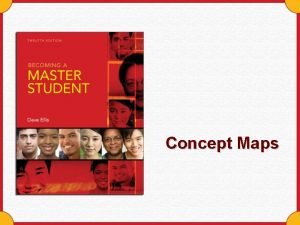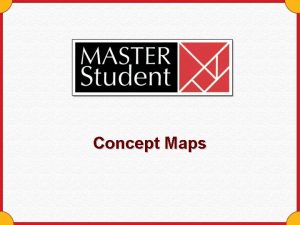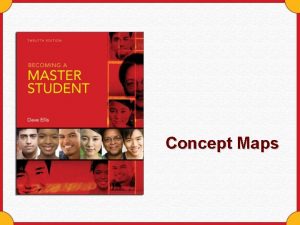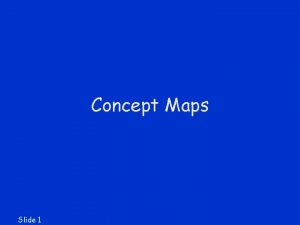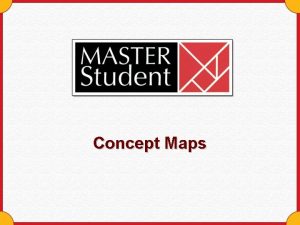Using Concept Maps to Organize Reviews of Literature














- Slides: 14

Using Concept Maps to Organize Reviews of Literature For CAUSE Research Clusters Hollylynne Lee April 6, 2010

Goals of a Literature Review • Getting familiar with research and best practices in area of interest • Extracting salient findings that seem interesting/important to the area of interest. • Synthesizing salient findings • Constructing a written document that presents the synthesis to provide: – relevant background for those interested – an argument for a proposed research study (gaps in research, research methods, populations of interest)

What is a “concept” map? • A diagram to represent relationships among concepts or topics. – Concept map —structure of how different ideas are related through linking phrases. – Topic map– structure of how different topics are related and indicates how/where/when those topics occur – Mind map- radial hierarchical or tree branch organization to help understand one central idea.

Concept Map showing linking phrases http: //en. wikipedia. org/wiki/Concept_mapping

Topic map showing associations and occurrences http: //en. wikipedia. org/wiki/Topic_map

Mind map showing branches from central idea http: //en. wikipedia. org/wiki/File: Mind. Map. Guidlines. JPG

Creating a Map of Literature • NOT creating a mapping of the relationship among certain statistical concepts. INSTEAD…. . • Extracting salient findings or “big ideas” from individual articles • Thinking about how those big ideas or findings are related • Documenting how certain articles contribute to the big ideas

Green- main topics Pink- Empirically based studies (qualitative, teaching experiments, interviews, etc) Blue- Quantitative studies Yellow- Theoretical studies/Literature reviews

• Numbers represent a label for individual articles





Easy-to-Use Mapping Tools • Free – Cmap http: //cmap. ihmc. us/conceptmap. html – Xmind http: //www. xmind. net/ – Vue http: //vue. tufts. edu/index. cfm • Cheap – Inspiration—used in K-12 education. Free 30 day trial http: //www. inspiration. com/Freetrial • Collaborative Mapping – Draw tools in Google Docs—allow for multiple simultaneous editors – Browser-based Mind 42 http: //www. mind 42. com – Webspiration Beta http: //www. mywebspiration. com
 Maps google maps reittihaku autolla
Maps google maps reittihaku autolla Writing literature reviews galvan
Writing literature reviews galvan Example
Example Pengertian marketing concept
Pengertian marketing concept Literature review concept map
Literature review concept map How we organize ourselves grade 4
How we organize ourselves grade 4 Sometimes scientists make a mistake or
Sometimes scientists make a mistake or Why do religions organize space in distinctive patterns?
Why do religions organize space in distinctive patterns? What is the tribal assistance coordination group (tac-g)?
What is the tribal assistance coordination group (tac-g)? Daily work activities
Daily work activities Toplumsal grupların özellikleri
Toplumsal grupların özellikleri Arrival in front office
Arrival in front office These are mental templates by which we organize our worlds.
These are mental templates by which we organize our worlds. Plan and organize
Plan and organize How did kublai khan organize mongol rule in china
How did kublai khan organize mongol rule in china




